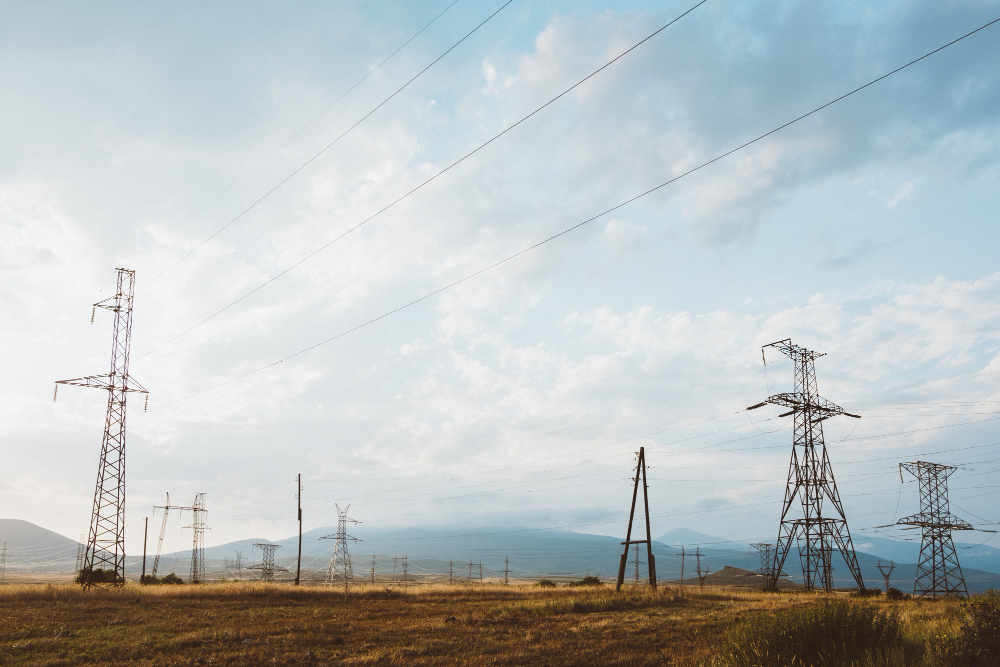Bloemfontein Electricity Tariffs: Complete Guide to Rates, Costs and Savings
Electricity costs affect every household and business in Bloemfontein, making it essential to understand how local electricity tariffs are structured. These tariffs, which include a fixed basic fee and a variable consumption rate, are influenced by factors such as supply costs, infrastructure maintenance, and municipal policies. Knowing how tariffs work helps homeowners and businesses budget effectively, track energy usage, and explore ways to reduce costs.
In this guide, we break down Bloemfontein electricity tariffs, explain how they are calculated, and provide practical tips for saving on electricity.
What Are Bloemfontein Electricity Tariffs?
Bloemfontein electricity tariffs are the official rates charged for supplying electricity to homes, businesses, and industries within the city. These tariffs determine how much you pay for each unit of electricity consumed and are set by the local municipality in accordance with national energy regulations.
Tariffs apply to different types of customers—residential, commercial, and industrial—and may vary depending on the chosen payment method, such as prepaid or postpaid billing. Understanding these basic definitions helps residents and businesses navigate their electricity bills and make informed decisions about energy usage.
Current Electricity Tariffs in Bloemfontein
Electricity costs in Bloemfontein vary by user type and season. Understanding these differences helps households and businesses manage their energy expenses. Below, we outline the tariff structures for residential, commercial, industrial users, and seasonal pricing.
Residential Tariffs
Electricity in Bloemfontein is supplied mainly through Centlec, the municipal distributor for the Mangaung Metropolitan area. Like many other South African cities, Bloemfontein follows a block tariff system, meaning the price you pay per kilowatt-hour (kWh) depends on how much electricity you use within a billing period. Understanding this structure is essential for households that want to manage their monthly costs effectively.
For residential customers, the tariff is generally divided into:
Basic Charge: A fixed amount that covers infrastructure maintenance and administration.
Consumption Charge: Varies according to usage blocks. Lower usage levels are billed at a cheaper rate, while higher consumption is billed at progressively higher rates.
Many households use a prepaid electricity meter price plan, which allows residents to control spending and avoid surprises on their bills. You can also conveniently buy electricity online, making it easier to manage your account and monitor consumption in real time.
Business and Industrial Tariffs
Businesses and industrial users face slightly different structures. Commercial tariffs may be flat per kWh or include demand charges based on peak usage, reflecting higher energy needs. Monitoring consumption and optimizing operational energy use can help businesses save electricity while controlling costs.
Seasonal Pricing
Bloemfontein applies seasonal pricing, with winter tariffs typically higher than summer rates. During colder months, when heating demands drive up consumption, Centlec implements a stepped increase for both prepaid and postpaid customers. This means that even moderate users can see a noticeable jump in their electricity bills if they do not monitor their usage carefully.

How Are Electricity Tariffs in Bloemfontein Calculated?
Electricity tariffs in Bloemfontein are set through a combination of national regulation and local municipal policy. The process ensures that the rates collected from residents and businesses cover the true cost of supplying power, while also supporting maintenance of the city’s electrical infrastructure. Below is a clear breakdown of how these tariffs are determined.
1. National Energy Regulator of South Africa (NERSA) Guidelines
The starting point is the annual price adjustment approved by the National Energy Regulator of South Africa (NERSA). Eskom, the country’s main electricity producer, proposes a wholesale price for the power it supplies to municipalities. NERSA reviews these proposals and sets a national benchmark increase, which acts as the foundation for every city’s tariff structure, including Bloemfontein.
2. Municipal Cost of Supply
Centlec, the municipal electricity distributor for Bloemfontein, calculates its cost of supply—the total expense of delivering electricity to end users. This includes:
Bulk Purchase Costs: The price Centlec pays to buy electricity from Eskom.
Infrastructure Maintenance: Upgrades and repairs to substations, transformers, and power lines.
Operational Expenses: Meter reading, billing systems, and customer service operations.
Losses and Theft Management: Technical losses during transmission and non-technical losses such as illegal connections.
The cost-of-supply study is crucial because NERSA requires municipalities to justify that their tariffs cover these expenses without overcharging consumers.
3. Tariff Structure Design
Once the total costs are known, Centlec divides them across different customer categories—residential, commercial, and industrial—using an Inclining Block Tariff (IBT) or flat-rate model.
Inclining Block Tariff: For households, the price per kilowatt-hour (kWh) rises as consumption increases. The first block (low usage) has the lowest rate, while higher blocks are progressively more expensive.
Flat or Demand Tariffs: For businesses and industrial users, rates may include a fixed price per kWh or an added “demand charge” based on peak electricity usage during the billing cycle.
4. Seasonal Adjustments
Bloemfontein applies seasonal pricing, with winter tariffs higher than summer tariffs. The colder months increase overall demand, so Centlec introduces a premium rate during winter to recover the higher supply cost and encourage efficient usage.
5. Approval and Public Participation
Before implementation, the proposed tariff schedule undergoes public participation. Residents and businesses can comment on the draft rates during municipal budget consultations. After incorporating feedback, Centlec submits the final tariffs to NERSA for formal approval.
Factors Influencing Bloemfontein Electricity Tariffs
Several key factors affect electricity tariffs in Bloemfontein:
Wholesale Costs
The price at which Centlec, the local electricity distributor, buys electricity from Eskom directly affects the tariffs in Bloemfontein. Eskom, as the primary supplier of power in South Africa, experiences fluctuating wholesale prices due to factors like fuel costs, the state of the national grid, and energy generation efficiency. These changes are often passed on to consumers through higher electricity tariffs. For instance, any increase in the cost of coal or disruptions in Eskom’s power plants directly impacts the cost at which Centlec buys electricity, which then raises rates for households and businesses in Bloemfontein.
Infrastructure and Maintenance
Investing in infrastructure is crucial for reliable electricity delivery, and this includes regular upgrades and maintenance of substations, transformers, and distribution lines. In Bloemfontein, as in many other areas in South Africa, aging infrastructure has led to frequent maintenance and repair costs. The expansion of the electricity grid to accommodate growing populations and urban development also adds to these costs. The financial burden of maintaining, repairing, and upgrading these systems is usually included in the electricity tariff structure. Furthermore, significant investments in renewable energy sources, such as solar power, can also increase infrastructure costs, although they may reduce long-term reliance on Eskom.

Seasonal Demand
Electricity demand in Bloemfontein peaks during colder months, particularly in winter, when homes and businesses require more heating and lighting. This increased demand can lead to higher costs. As energy consumption rises, so do the operational costs for electricity suppliers. Eskom and Centlec may need to purchase more expensive peak-time electricity to meet this demand. The cost of providing electricity during peak periods is generally reflected in the tariffs charged to consumers. Additionally, as more people use space heaters and electric blankets during the winter, household electricity bills tend to increase.
Economic and Regulatory Factors
The broader economic landscape also influences electricity tariffs in Bloemfontein. Inflation can drive up the cost of electricity due to increases in the price of coal, labor, and other essential materials required for energy generation and distribution. Similarly, changes in energy policy and regulation can impact tariffs. For example, when Eskom introduces tariff hikes to compensate for debt or operational costs, these increases are passed on to consumers. Additionally, losses due to energy theft and inefficiencies in electricity distribution increase the financial burden on legitimate users, which often results in higher rates. Furthermore, the transition to renewable energy sources, while environmentally beneficial, comes with its own regulatory costs, which can also affect tariff prices.
Practical Tips to Save on Your Electricity Bill
Managing electricity costs in Bloemfontein involves both careful planning and smart use of technology. Here are some practical strategies:
1.Monitor and Reduce Energy Consumption
Tracking your electricity usage is the first step toward savings. Simple measures like switching off unused appliances, using energy-efficient lighting, and running high-energy devices during off-peak hours can help you save electricity without compromising comfort.
2.Use Prepaid Electricity Options
Choosing a prepaid electricity meter price plan gives you greater control over your energy consumption. By purchasing electricity in advance, you can monitor usage in real time, avoid unexpected bills, and plan your energy needs more effectively.
3.Invest in a Reliable Backup Solution
Power outages can disrupt daily life, but a high-capacity portable power source can provide stability. The EcoFlow DELTA Pro 3 Portable Power Station offers 230V, 4000W output, with 4–12 kWh capacity, allowing it to power most home appliances during blackouts. Its quiet operation, plug-and-play design, and fast charging capabilities make it one of the best home backup systems available, ensuring your household stays safe and functional while optimizing electricity usage.
EcoFlow DELTA Pro 3 Portable Power Station
Conclusion
Understanding Bloemfontein electricity tariffs and actively managing your energy use can make a noticeable difference in your monthly expenses. By combining smart consumption habits, prepaid options, and reliable backup solutions likeportable power stations, residents and businesses can stay prepared for outages, optimize costs, and maintain a stable power supply. Taking these steps not only helps manage electricity bills but also promotes a more efficient and resilient approach to energy use in Bloemfontein.
FAQs
How much is 1 kWh of electricity in South Africa?
The average residential electricity price in South Africa is roughly R2.40–R3.00 per kilowatt-hour (kWh), depending on the municipality and tariff block. Cities such as Johannesburg and Cape Town fall within this range, while smaller municipalities may differ slightly. In Bloemfontein, electricity is supplied by Centlec, which uses an Inclining Block Tariff (IBT), meaning the more electricity you use, the higher the rate per kWh. Seasonal changes also apply—winter tariffs are higher to reflect increased demand. Always check the latest approved tariff schedule on your local municipality’s or Centlec’s website.
What are the peak hours for electricity in Bloemfontein?
Peak hours in Bloemfontein generally occur early morning (6:00–9:00) and evening (17:00–20:00) when households and businesses use the most power. During these times, demand for electricity rises sharply as residents prepare for work or return home, switching on heating, cooking, and lighting. Centlec applies higher rates during these periods in winter months to manage demand and recover additional supply costs. To save money, schedule high-consumption activities such as running washing machines or geysers during off-peak hours, typically midday or late evening, when electricity demand and costs are lower.
How to check electricity tariff?
To check your electricity tariff in Bloemfontein, first identify whether you have a prepaid or postpaid meter. Prepaid users can view current rates on their purchase receipt, the Centlec mobile app, or online token platforms. Postpaid customers should examine their monthly bill, which lists the tariff type and rate per kWh. For the most accurate and updated information, visit the Centlec website and look for the “Tariffs” or “Cost of Supply” section, where annual schedules approved by the National Energy Regulator of South Africa (NERSA) are published. You can also call Centlec’s customer service or visit a municipal office for assistance.